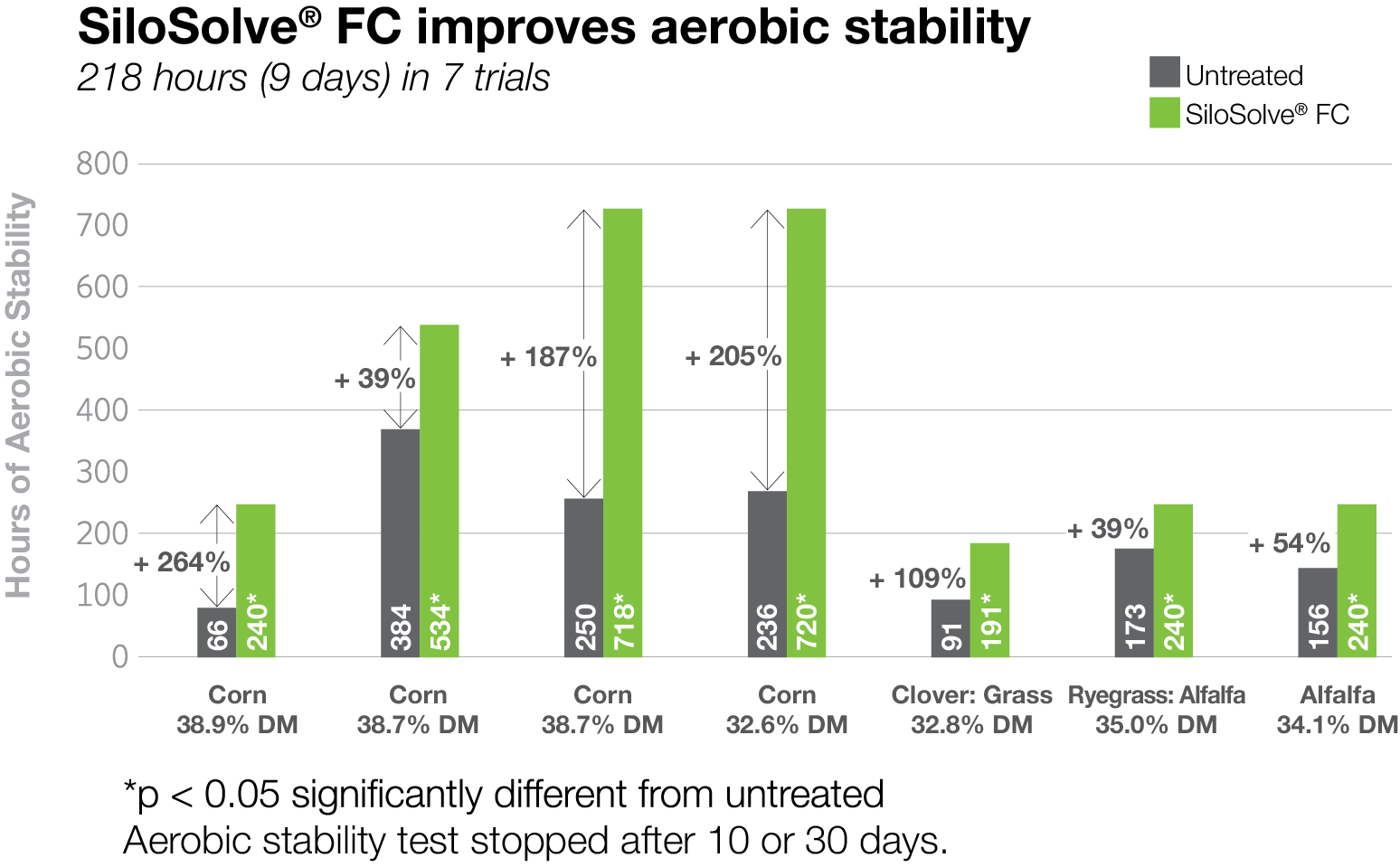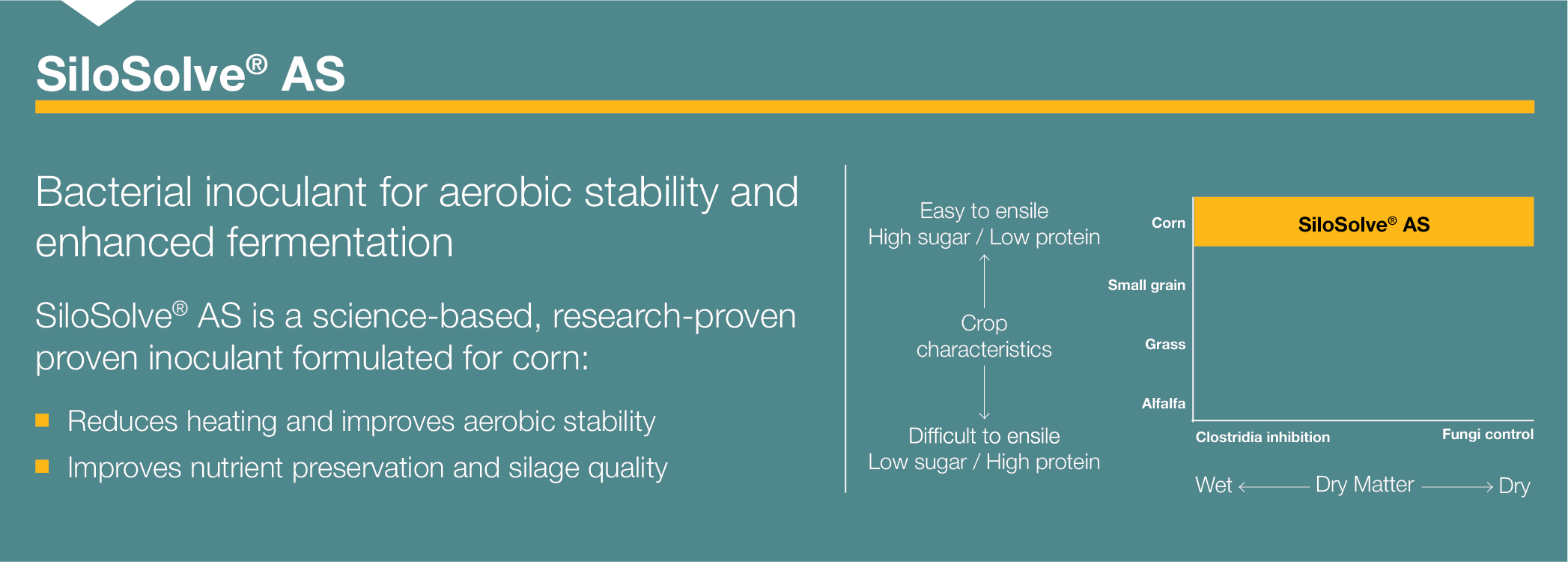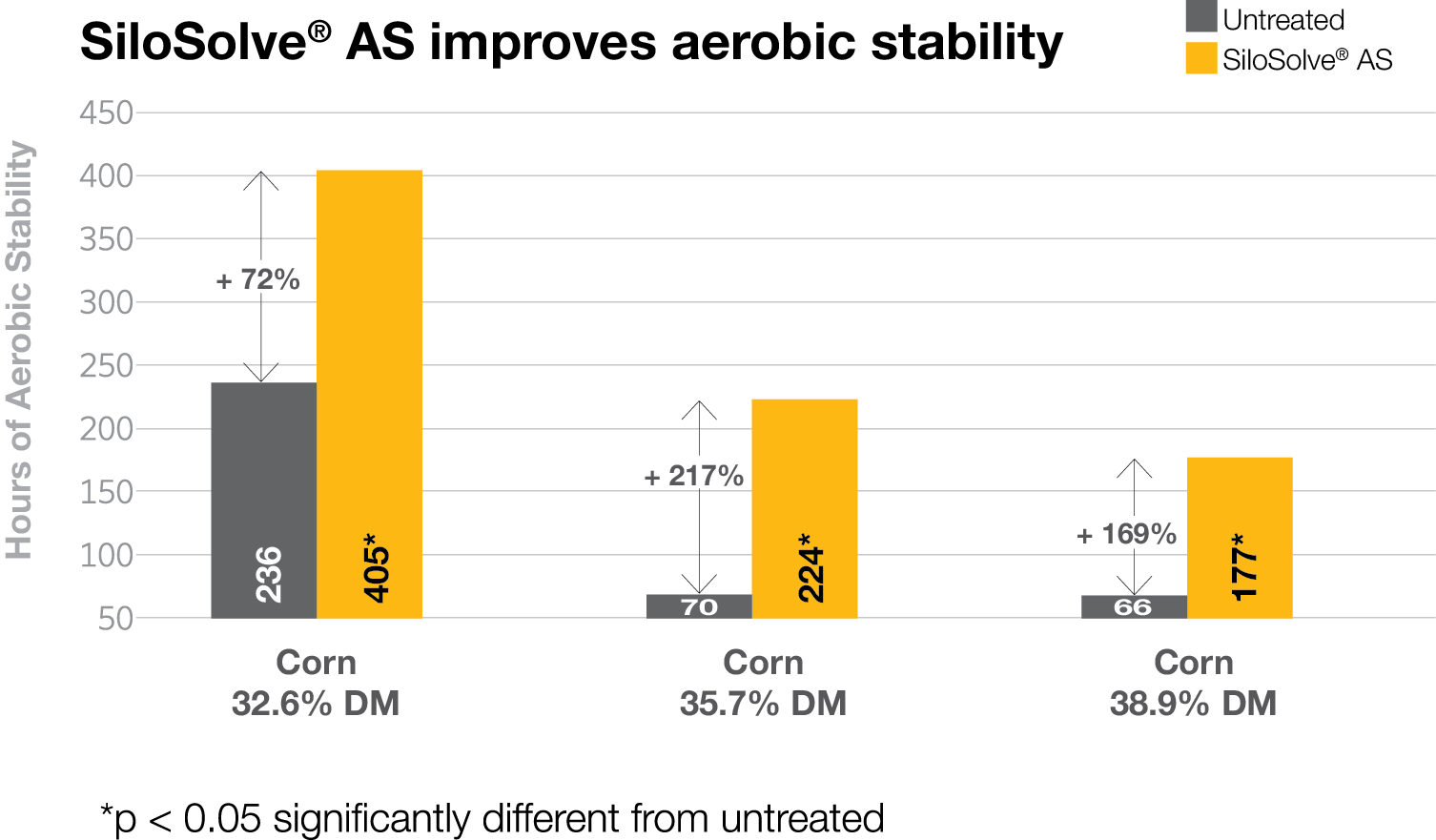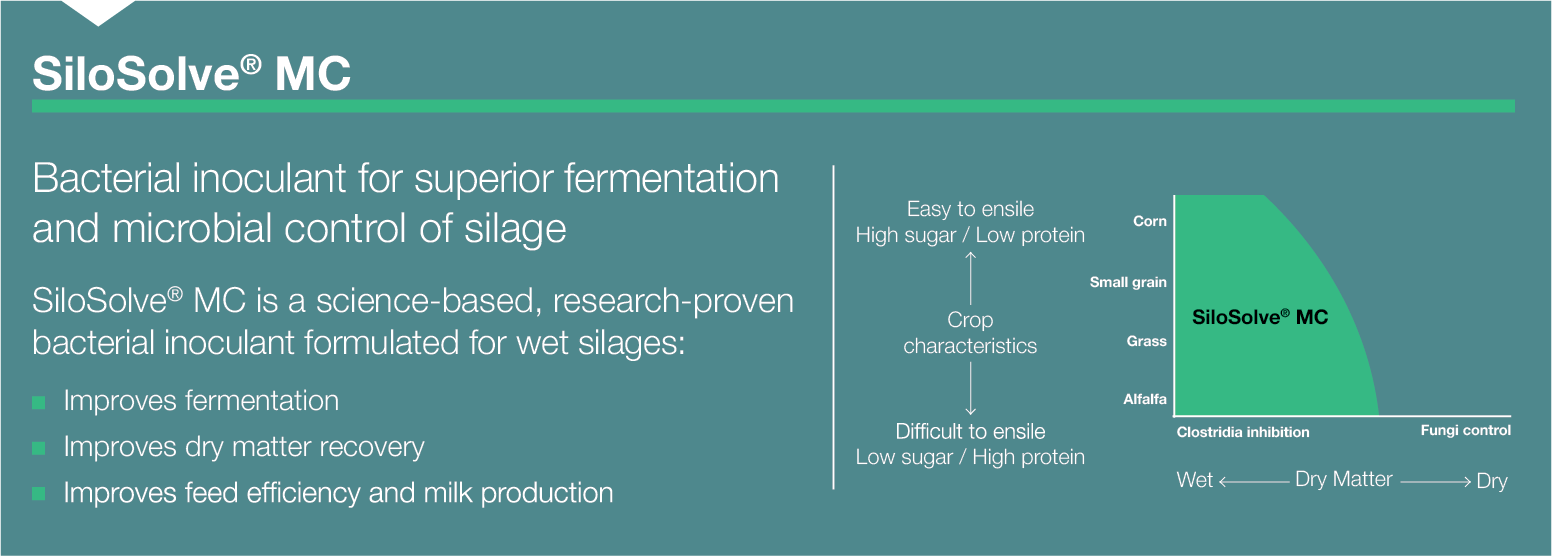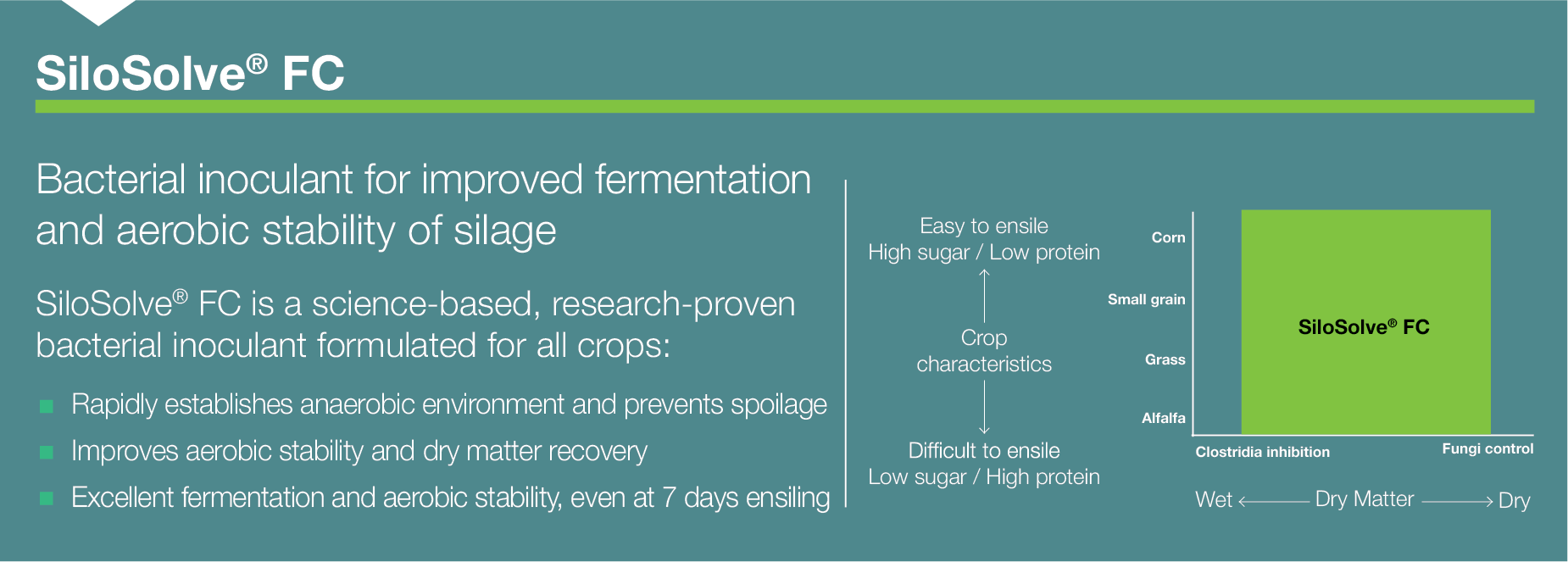SiloSolve® AS
Aerobic challenge during feed out
When silage is exposed to air, typically during feed out, spontaneous heating of the silage can occur. Nutrients are lost and palatability of feed is reduced. The outcome – besides nutrient loss – may be reduced feed intake and subsequent reduced milk production. Some crops, such as corn, are more susceptible to aerobic deterioration and heating than others.
SiloSolve® AS improves aerobic stability
SiloSolve® AS contains two fast growing and competitive lactic acid bacterial strains and a unique strain of Lactobacillus buchneri. This specific combination of bacteria strains improves fermentation resulting in improved aerobic stability at feed out.
SiloSolve® MC
SiloSolve® MC results in fast fermentation
Fast and effective fermentation of forage crops during ensiling is aprerequisite for the preservation of valuable nutrients for dairy cows. The faster the fermentation occurs, the greater the quantity of nutrients preserved for feeding.
SiloSolve® MC is a silage additive containing three highly-selected strains of lactic acid bacteria that direct and control overall fermentation.
Clostridia predominantly grow in wet silage when there is a lack of oxygen. Growth of Clostridia leads to breakdown of protein and production of butyric acid. Butyric acid may lead to poor feed out performance, and may negatively impact health when fed to high producing dairy cows.
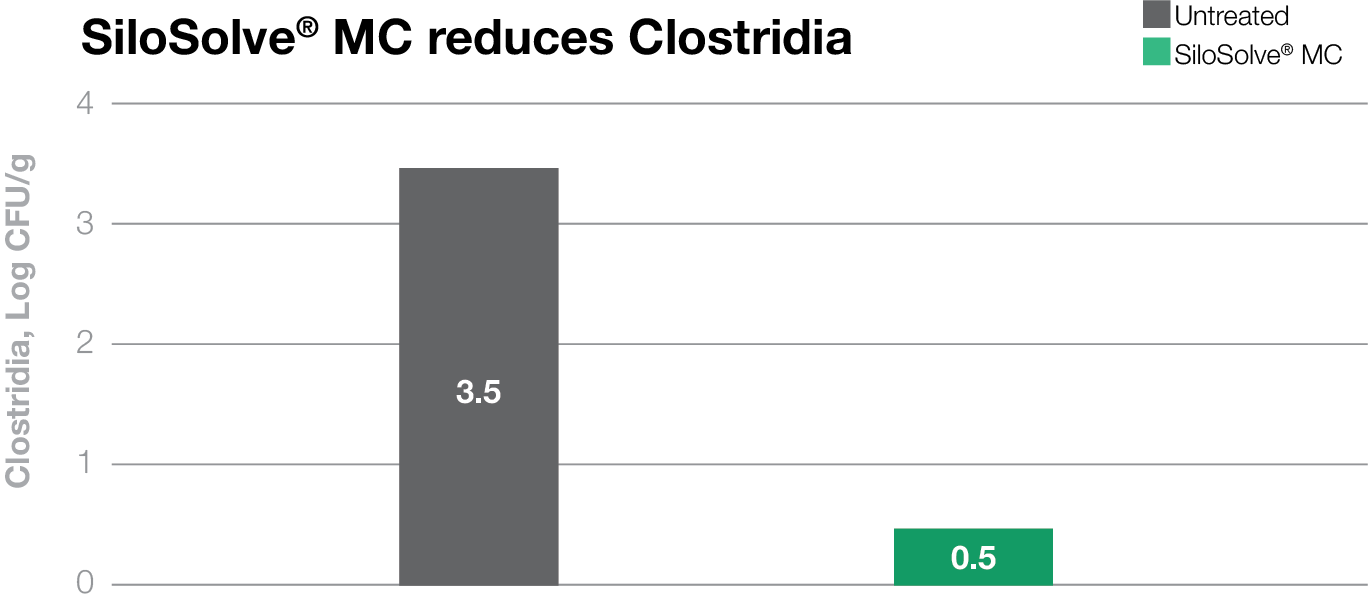
The solution to silage challenges
SiloSolve® FC has consistently yielded silage preferred by dairy cows. SiloSolve® FC promotes rapid, controlled fermentation and ensures that dry matter and nutrients from the field are preserved and available for your cows.
SiloSolve® FC improves aerobic stability while improving dry matter recovery
SiloSolve® FC is a unique, dual-action inoculant that improves aerobic stability and at the same time improves dry matter recovery over a broad range of dry matter and forages. While SiloSolve® FC increased aerobic stability up to 30 days in university trials, dry matter recovery across crops was improved an average of 3,5% points compared to untreated silages.
